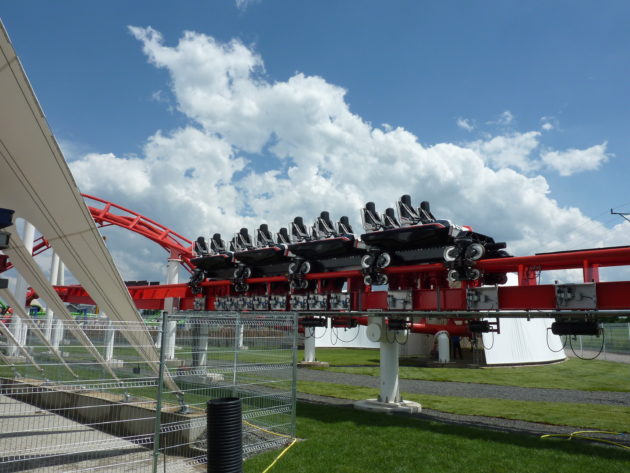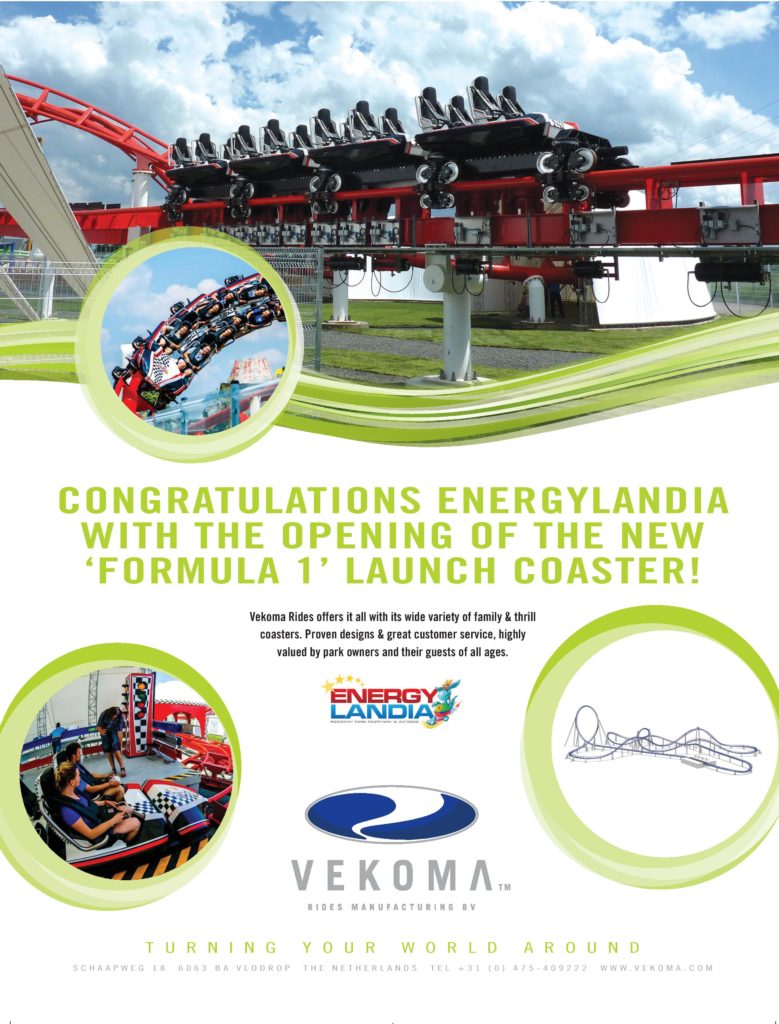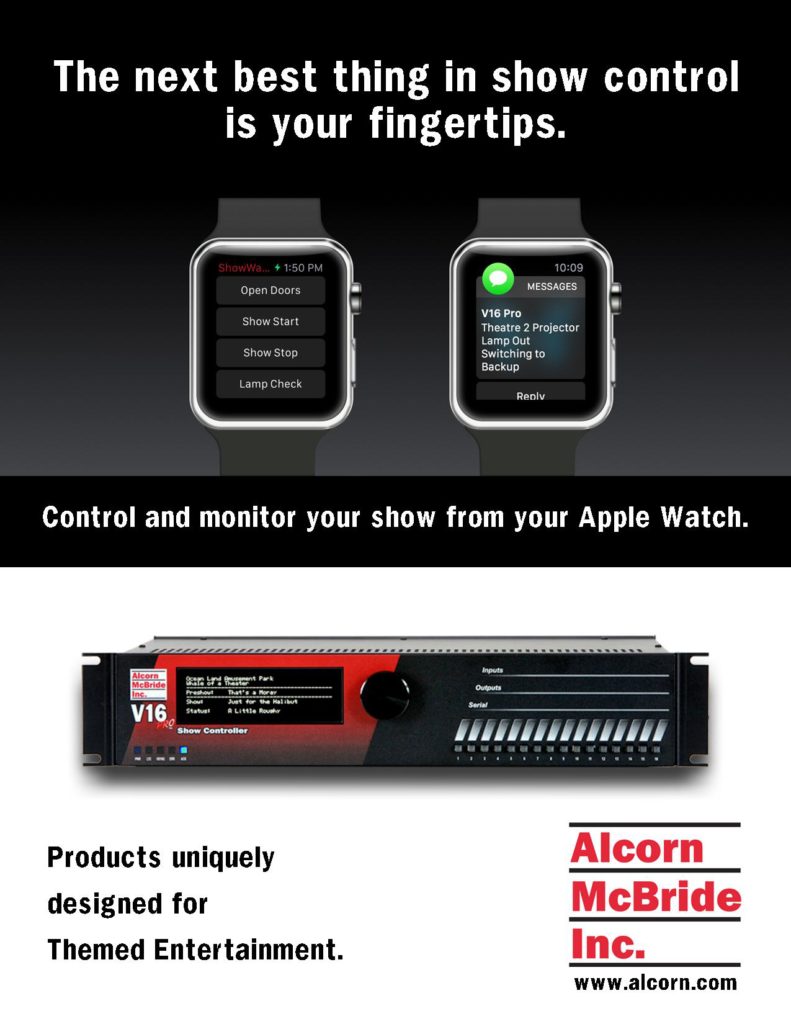What does it take to design the best thrill rides and stay on top of the business?
by Kevin Dazey
InPark reached out to five leading ride manufacturers – Chance Rides, Great Coasters International, Mack Rides, Rocky Mountain Construction, and Vekoma Rides Manufacturing – to discuss qualities that make for a successful ride engineer or designer, look at recent achievements and talk about quality control and the process of ride and roller coaster development.
ABOVE: Vekoma Space Warp
The process of developing a new roller coaster or amusement ride product can last well over a year. Reliability, ease of maintenance, and of course safety are just a few considerations that must be reviewed during the design period.
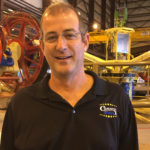
Chance Rides
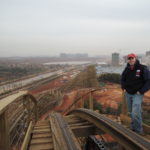
GCI
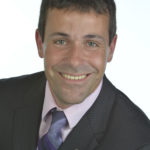
Mack Rides


Vekoma Rides
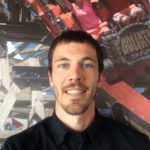
What makes a great roller coaster engineer?
A roller coaster engineer’s skillset encompasses the major engineering disciplines such as mechanical, structural, and electrical. Excellent problem solving skills using science and math, thinking outside the box, and adaptability are vital. Interest in the field is also a plus.
Complete familiarity with specialized manufactured products does not happen overnight. An engineer may start by learning one or two aspects of a product or process; from there the knowledge base continues to grow and hopefully never stops. Communication and sharing of expertise with one’s peers is constant, as is the need to roll with the seasonal business cycle.
Since there is no specific higher education curriculum tied to this niche (although a number of universities have formed clubs) we asked questions about the qualities that manufacturers find valuable, and where they look for candidates. Education is just preparation. The phrase, “can you be taught?” stands out whether a degree is present or not.
Do you have what it takes?
[quote]You can take successful features from previous designs and incorporate on upcoming rides. This also includes tweaking an element that was not quite right, where an improvement was needed to make it more comfortable or thrilling.”[/quote]
Steve Gladow, Engineering Manager, Chance Rides:
In short, there is not a simple amusement rides 101 class that is missing from curriculums that would make a difference. I know that much of what has been developed (designed, engineered, and manufactured) at Chance Rides has come from a team of people, some of whom are “formal” engineers and many of whom are folks that simply have a passion for and are good at creating, designing and manufacturing.
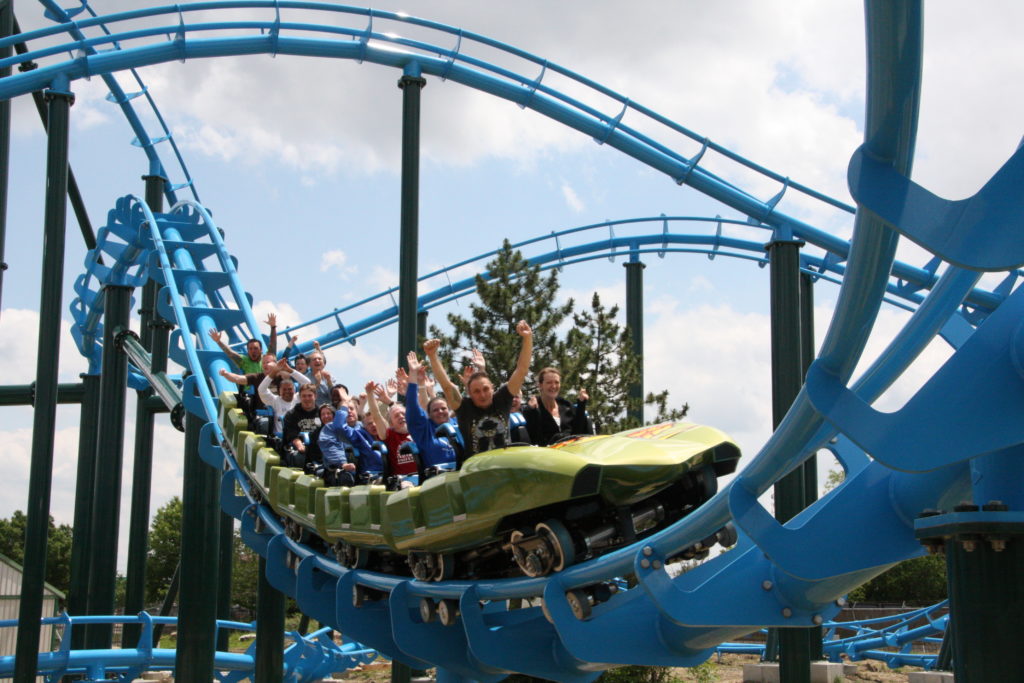
My opinion is that the engineering function is not tied to the ride creator/designer function. The engineering function is primarily to take a ride concept and create the machine or system that does this safely, reliably, and cost effectively for all parties involved. Of course, there are certain individuals who do possess both skill sets. In addition, an engineer needs to stay current with new technologies, techniques, and changes in the industry itself such as updated industry specifications. I would add civil and computer/software engineering to the others mentioned [mechanical, structural and electrical].
Fraser Ross, Concept Engineer, Vekoma Rides Manufacturing:
Every concept designer at Vekoma is passionate about roller coasters and has good knowledge of all types around the world. It is important to know what rides exist, and to experience firsthand.
There are no specific educational courses on roller coaster design, but in general you need a thorough technical background and training. A master’s degree in mechanical engineering or physics would be most helpful. Of course electrical engineering is important for the systems department.
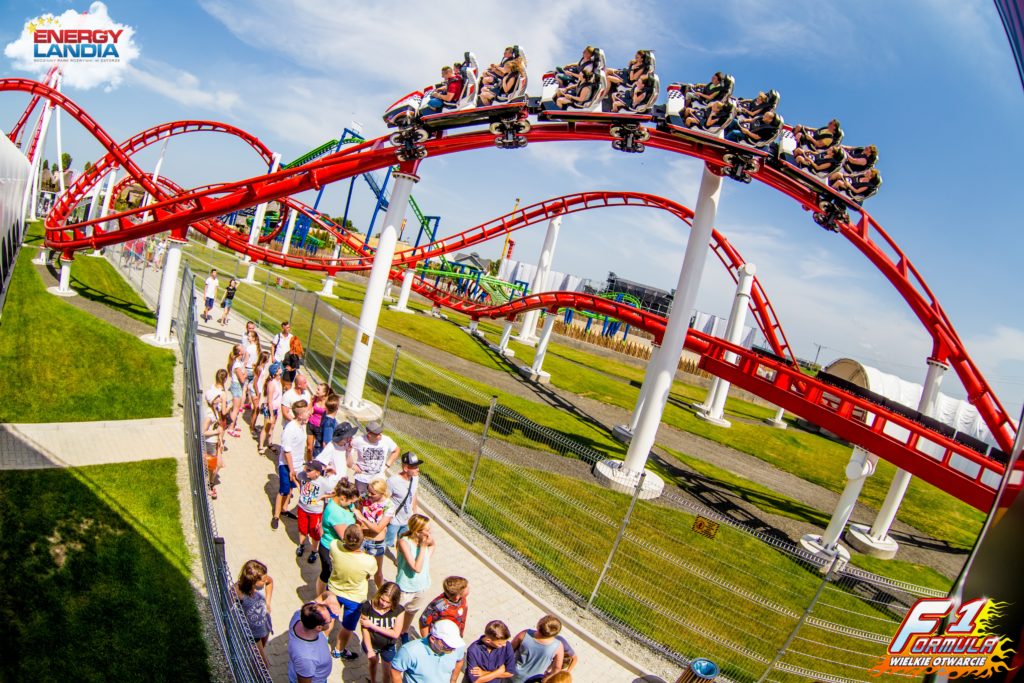
As a concept engineer, creativity and mathematics come hand in hand. An analytical mind is a must because of the many different subjects that have to be taken into account to make a design successful. Regarding rollercoaster design and calculations, all issues have to deal with fatigue. In most of the studies hardly any time is spent on this. This part of the design process will be learned inside the company.
We have several well recognized universities in the Netherlands such as the Technical Universities in Delft and Eindhoven. We work together with universities, give presentations, and participate in job fairs. Engineering interns are often are hired for full time employment. We also work together with international universities such as the RWTH Aachen Germany.
Thorsten Koebele, Chief Officer Sales & Marketing, Mack Rides:
It’s the general understanding of rides and technics that make a good engineer. One key factor is the interest in our industry and the rides, which is not very difficult as we work in a fun business.
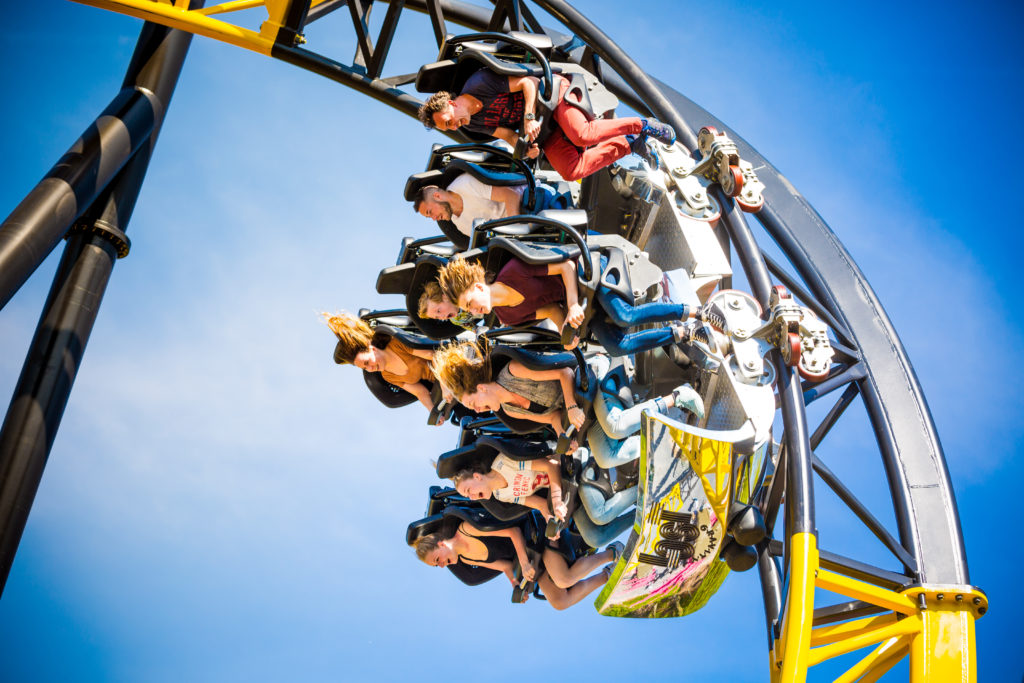
We have people working at Mack Rides that started their career in a totally different direction and became engineers over time because of their passion and understanding. It is a must that you have to try the rides you engineer and manufacturer – so our engineers have to be brave!
Scott Voyles, Designer and Draftsman, Rocky Mountain Construction (RMC)
We definitely have a busy season at RMC. During that time, it is imperative that people are efficient in managing their time, detailed, willing to take on responsibilities outside their assumed scope, remain dependable, and able to communicate effectively.
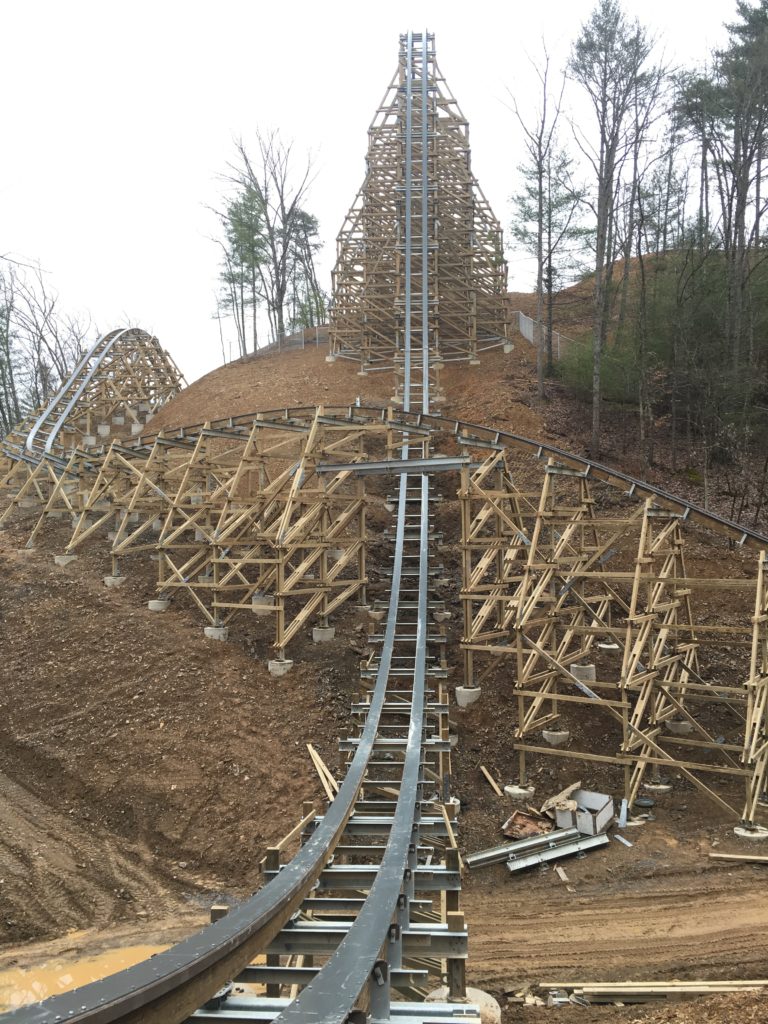
The pace is fast and employees need to be able to think on their feet. The detailing, logistics, testing, and execution of an idea take training and experience as well as talent. I wouldn’t say that we focus on the origin of one’s education. Generally, we are looking for a specific skill set and someone who is a “good fit” to our company’s design culture.
Adam House, Senior Design Engineer, Great Coasters International (GCI)
At least one course featuring hands-on experience would be helpful that points out how important tolerances are for mechanical systems. I started as an intern at GCI helping build the company’s Millennium Flyer wooden roller coaster trains. This proved to be invaluable for learning how to be a good team member and later going on to help design the Mini-llennium Flyer junior trains.
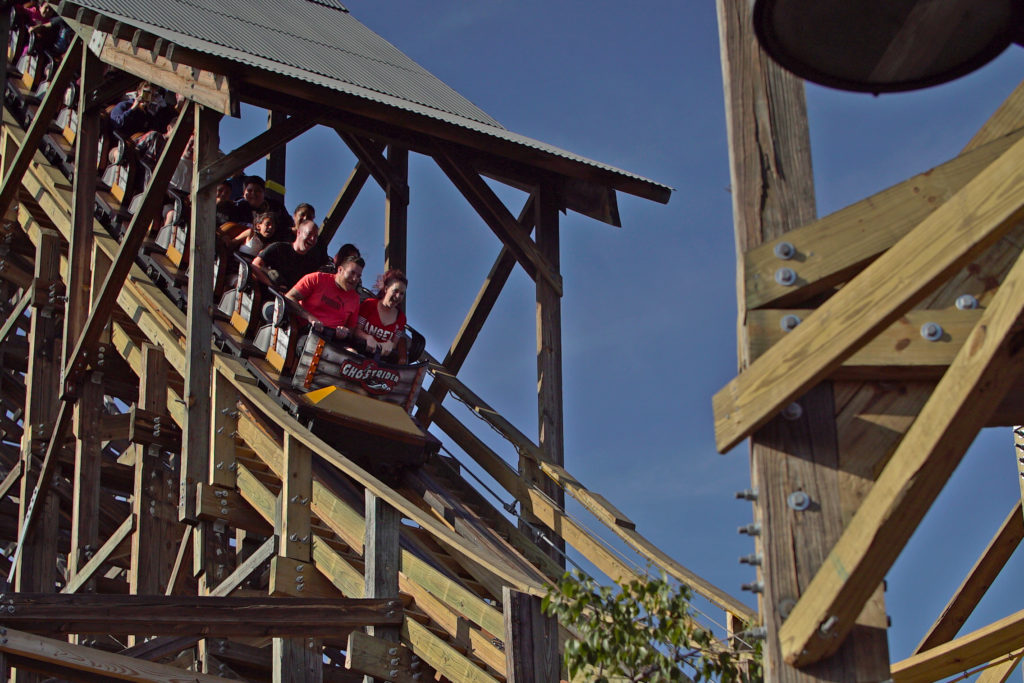
It is nice knowing the basics of what has been done before, but also incorporating new ideas and thinking what can I do differently or has not been done yet. You can take successful features from previous designs and incorporate on upcoming rides. This also includes tweaking an element that was not quite right, where an improvement was needed to make it more comfortable or thrilling.
Locating talent does not necessarily come down to what school one attended, but rather possessing the strong problem solving mentality. We frequently bring on interns who could become full-timers if hard work is shown. After that it takes displaying a personality that would be a “good fit” at GCI. Theme park engineering clubs at various universities have become an awesome resource for the intern program. It’s great to reach out to these groups and, for example, talk to the club president and request five resumes to review for upcoming needs.
What’s the story behind your latest big achievement?
In the ride attractions world, the next big idea could be a new way to spin, flip, drop, or soak willing riders. Sometimes development can also mean modernizing existing rides in the field to make them not only more appealing, but comfortable as well. Take the classic wooden roller coaster, for example – the last 20 years have seen a great deal of improvements that have led to smoother and more re-rideable coasters.
Many steps are covered during the research & development phase.
Studying the market is a given before the first drawing is created or prototype fabricated. New products can come about by listening to customer feedback as well as internal initiatives to gain market share. Testing is integral to the design process, and could be the indicator on whether the project scope is scaled back, moves forward, or the idea is shelved for later.
Bragging rights for a rides manufacturer to have designed and built the world’s (insert superlative and ride type here) began with challenges. With safety paramount and strict standards in place, there are no “easy” projects.
Great Coasters International – GhostRider refurb & Mini-llennium flyer trains
One of GCI’s major projects for 2016 occurred at Knott’s Berry Farm where a refurbishment took place on the GhostRider wooden roller coaster. The effort to make GhostRider a more enjoyable experience involved replacing nearly all track sections, smoothing out rough areas by re-profiling, and adding a pair of GCI’s own Millennium Flyer trains. This marks the latest of several wood coaster enhancements the company has handled.
How did the Knott’s GhostRider refurbishment compare to designing a new layout?
It was a little shorter process for the refurbishment than a complete new ride, but we also faced certain challenges that we don’t typically face with a new ride. The biggest challenge was trying to keep GhostRider true to what it is; a classic wooden coaster, but still adding enough changes to enhance the ride and make it feel new. The structure moved quite a bit prior to the work we did and there were difficulties my team faced to figure out how to brace and strengthen the structure. GhostRider was re-profiled – this refers to shooting ledger elevations, understanding how the ride currently exists, then going back in and literally redesigning sections on the ride to enhance it and make it better. GCI as a whole has done this on several rides most notably the Coney Island Cyclone and Boulder Dash at Lake Compounce, but this was really the first time we could almost literally re-build a ride and truly make it a ‘Great Coaster’.
How do updates and modifications to trains, control system, or other mechanical hardware generally come about; operator feedback or constant in-house improvement projects?
This is really a mix of both: When I go to a park and talk with maintenance personnel they always have great, real-world experience with our trains. With their help I can take notes on general modifications; then go back and implement them with my team. We also discover general design improvements from our end and implement them as we find necessary.
Instead of upholstered seat material, the switch was made to dense foam. The very first GCI ride to implement this was White Lightning at Fun Spot, at the client’s request. After having seen how well it worked and realizing that it was a competitive move, we made this switch for all rides moving forward.
GCI’s newest product is the Mini-llennium flyer trains. How long was the development process and what was the biggest challenge?
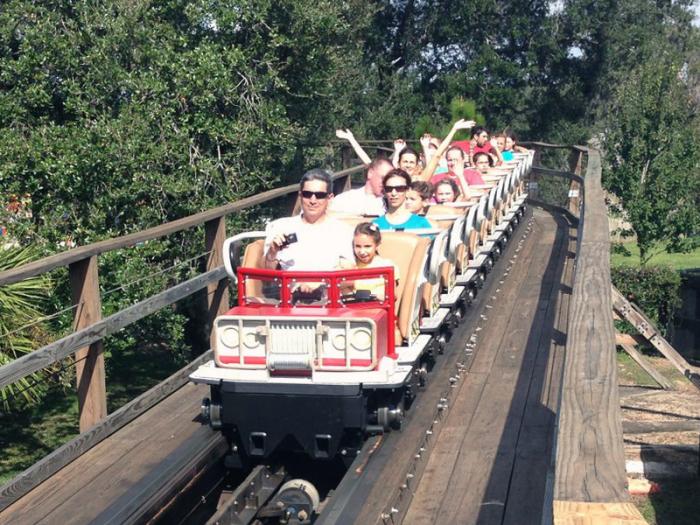
From start to finish it was about a full year; most parts were scaled down from the Millennium Flyers. I would say the biggest challenge we faced was being able to have individual lap bars within such a small track gauge, and allow two adults to ride comfortably. The key modification was for independent lap bars, but we also found out that our modifications increased ride capacity because two riders could easily fit in each car. Also, if there’s only one passenger, the empty seat’s lap bar was designed to act as a seat divider securing the single rider in place.
Mack Rides – Power Splash
What do you get when aspects of a shoot-the-chutes water ride and a launched shuttle coaster combine? Mack Rides’ unique new Power Splash, which recently opened at Walibi Belgium.
This backwards-and-forwards water ride coaster hybrid offers an exciting way to cool down on a hot day. The layout is simple; two vertical towers separated by a splashdown pool and small bunny hill form a U-shaped piece of track. Riders experience three launches total before climbing backwards up the rear tower which leads to the splashdown finale.
What inspired a launched splashdown attraction and what was the approximate development time?
The initial idea was to create the world’s first launched water ride. Therefore, we came up with several different ideas and came to the conclusion that the Power Splash concept would have the ability to be an innovative and successful ride on the market.
We had several challenges that needed to be solved. The loading for instance is done on a turning platform where one boat can load while the other is running in order to increase capacity. Also, we could not use LSM drives in the water and had to come up with our weir system [a barrier or intercept of flowing water] to get the splash and brake effect.
The overall project was launched in 2013 – so it took about three years from sketch to finished product. Of course the idea itself was older and we had to have the approval for the first project.
Mack seems to develop rides with high capacity; does this come from operator request or is this an internal goal for each project?
We serve the customer’s need with every ride. In 2016 we opened rides with less capacity (Power Splash & Big Dipper) than we used to build. As both operator and manufacturer the Mack family knows how important it is to have high capacity for the more crowded days in the parks. Mack Rides therefore is always seeking high capacity. Of course each operator can influence the capacity with the amount of trains/cars they purchase.
When a new concept is developed such as Power Splash, is there some kind of submittal or audit process?
The first studies are all under inspection here in house if it is doable. With our long history and the many projects we have already opened we know quite well where to look for problems that might occur. We also have a constant drawing review to ensure proceeding with the right content.
Rocky Mountain Construction – new single rail “Raptor Track” system
Author’s note: Also if you visit Dollywood, check out the new RMC-built Lightning Rod, being billed as the world’s fastest wooden roller coaster at 73 mph (118 km/h). Featuring customized hot rod inspired trains also made by RMC and numerous airtime hills, this coaster also uses the company’s Topper Track design where the top two layers of wood are replaced by a steel counterpart.
Last November, RMC revealed two new single rail steel track
coaster systems. How did these come about?
The development of the single track systems was initiated for a couple of reasons. First, we want to have a small-scale, cookiecutter type of ride on the market. We believe this will allow our product to become available to smaller parks or family entertainment centers. The Raptor Track design is small scale, has lower loads and a less complicated train design. However, it is still capable of the banks, inversions, and other elements that people enjoy on our rides.
Rather than custom building each coaster this type allows us to do the design and engineering once to lower product cost. Second, both the erection and remodeling of a wood coaster consumes a tremendous amount of material and labor resources. By moving to a steel structure, we hope to eliminate much of the labor required. This benefit will again provide us the opportunity to lower the cost of the ride. The T-Rex Track is a similar concept, but will have the capability to be a more intense ride. We hope to obtain the benefits from erecting a steel structure for this design as well.
With regard to ride layout, it has taken no extra time since there is less structure to engineer, detail, and manufacture. Overall this process has required less effort than a wood coaster rebuild or new construction, but the trains will require more time for development. The nature of the function and mechanics require thorough investigations into each component, but this is not unlike the arduous development process that we went through to develop our current trains.
There’s obviously financial risk involved during product development, would you think the attractions industry is unique or are all industries similar in some regards?
We are in a good position with regard to product development. The workload keeps steel flowing through our facility which results in plenty of steel remnants that we can use to mock-up assemblies, refine welding procedures, and test parts. Since the nature of the product is so similar to the type of business we are currently conducting, we have little invested into the materials.
The majority of our costs are related to design time, which has remained fairly low. I think this would be true for other industries as well. The start-up costs are certainly a barrier to enter the market, and all investments are out of pocket without the certainty of generating revenue. Those already in the industry will have advantages related to cash flow, purchasing power, and personal connections throughout the industry.
Vekoma – Space Warp Launch Coaster
Sixteen riders at a time blast off from a standstill on the Space Warp Launch Coaster, Vekoma Rides’ latest steel roller coaster concept. This new thriller just made its first appearance at Poland’s Energylandia which includes three inversions, airtime hills, and a new train design. Since a traditional lift hill is absent expect to reach 50 mph (80 km/h) in three seconds after leaving the station; from there the action is nonstop until the brake run.
Is Space Warp a completely new coaster design or a variation of
an existing and how long was the design period?
Space Warp launch coaster is a brand new design produced from our state-of-the-art concept creation process which results in a super smooth ride. Further to this, Space Warp is the first ride to feature our brand new MK1101 train which matches this sleek design. This is the first of many exciting new custom designs getting built around the world over the next few years by Vekoma that feature our new train system. For Space Warp in particular, from concept design to testing and commissioning, it has taken around 1 year 8 months.
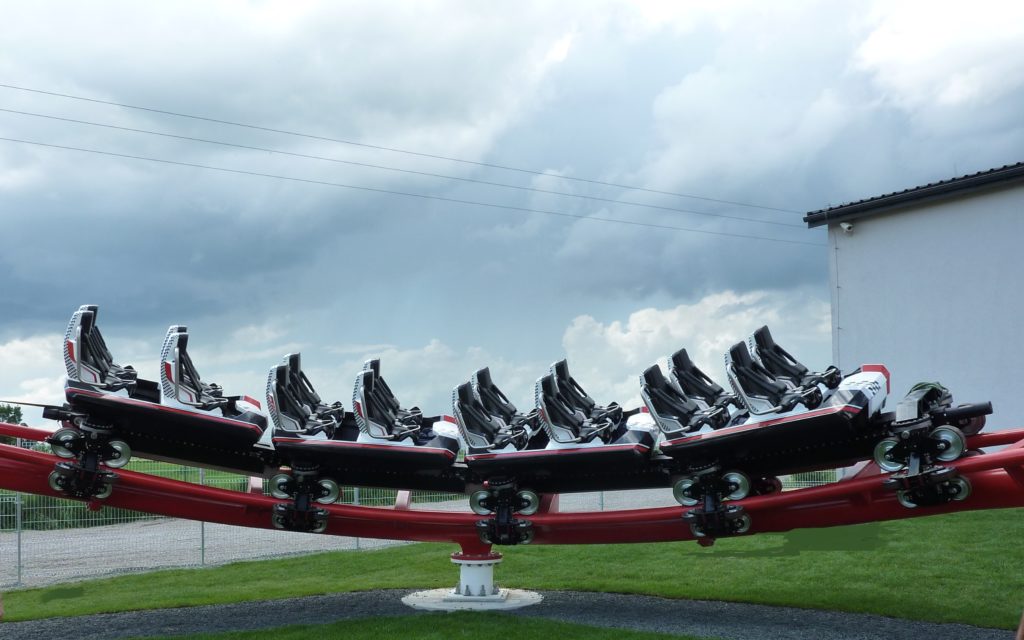
Not only are new products and innovation keys for success, but what about updates and modifications for older ride models (redesigned trains and/or restraints)?
For existing Vekoma coasters our Parts & Services department offers not only spare parts, but also new trains, track improvements, and rehab services. For example, we have a new train design for our Suspended Looping Coaster with improved ergonomic seating, a special integrated vest replacing the over-the-shoulder restraint for a secure, comfortable, and unrestrained feeling. Other features include a hydraulic locking restraint system and solid machined wheel carriers.
Our upgraded MK1200 sit down trains are also a good replacement for the MK1200 track system. These new trains fit the existing Vekoma MK1200 track systems & similar non-Vekoma track systems. Basic ergonomic improvements featuring more space & comfort in its semi-open design permit an improved ride experience. For our family coasters we offer new wide bodies with individual seat pads and U-shaped lapbars, or individual T-Lap bars for existing bodies, so passengers are individually and comfortably seated and secured. Chance Rides Hyper GT-X steel roller coaster
Bigger is not necessarily better. This newer Chance model became a big hit when it debuted at Kentucky Kingdom in Louisville KY. A mere 100 foot (31 m) lift hill and a top speed of 55 mph (86 km/h) may seem tame by today’s standards, but the pops of airtime and quick ground hugging directional changes will more than make up for the lesser stats. The smaller footprint would certainly appeal to smaller parks or anywhere space is limited. According to Steve Gladow, approximate development time was roughly 12 months. • • •
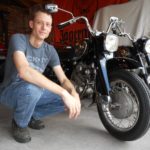 Kevin Dazey has a mechanical engineering background and works in R&D at a manufacturing company in St. Louis, MO. His passion for roller coasters and amusement parks began early on while growing up in northeast Ohio near Sea World, Geauga Lake, Cedar Point, and Kennywood. To date, he has visited 41 parks and ridden 235 roller coasters. Besides a fondness for the attractions industry Kevin enjoys maintaining a collection of vintage motorcycles and ATVs. Email: [email protected]
Kevin Dazey has a mechanical engineering background and works in R&D at a manufacturing company in St. Louis, MO. His passion for roller coasters and amusement parks began early on while growing up in northeast Ohio near Sea World, Geauga Lake, Cedar Point, and Kennywood. To date, he has visited 41 parks and ridden 235 roller coasters. Besides a fondness for the attractions industry Kevin enjoys maintaining a collection of vintage motorcycles and ATVs. Email: [email protected]


